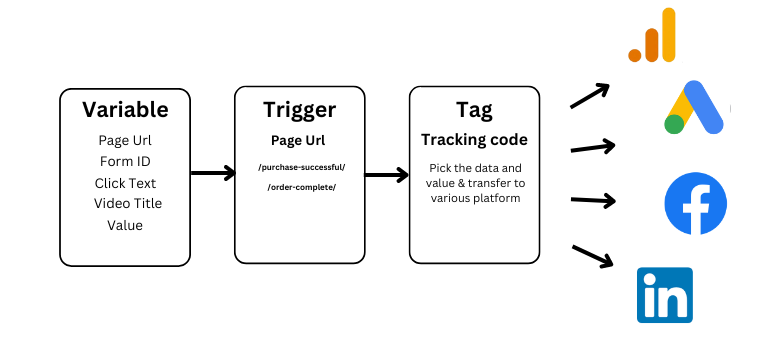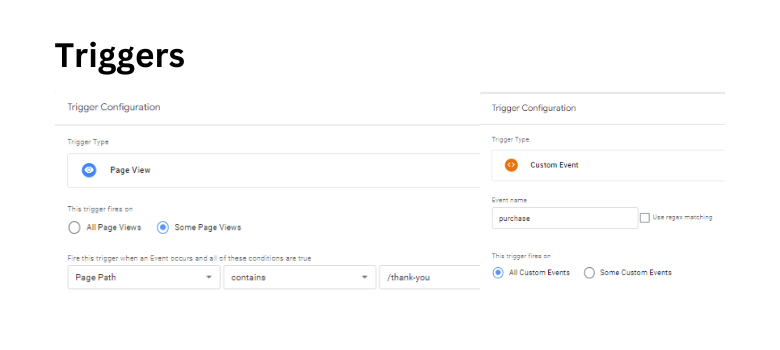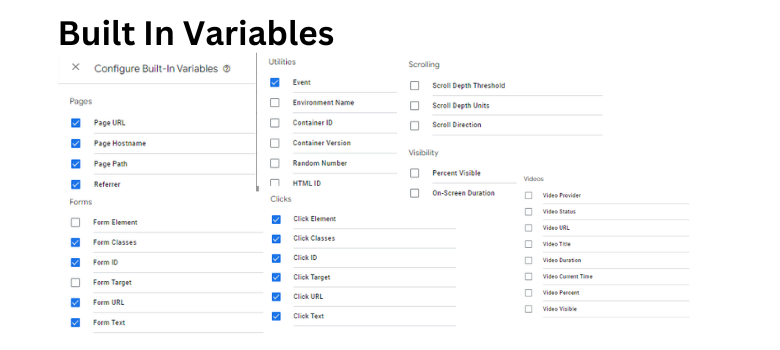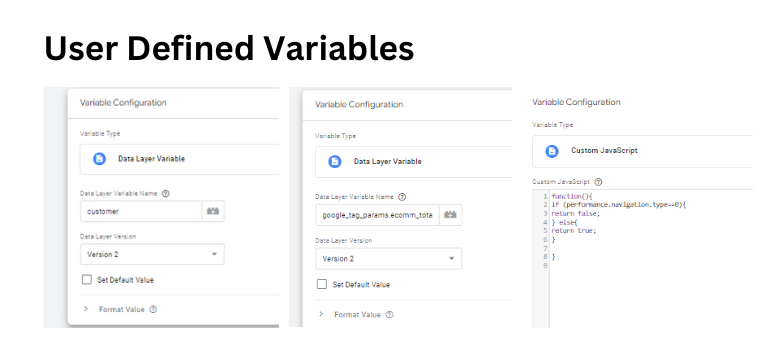Understanding how Google Tag Manager (GTM) operates is essential for anyone looking to streamline their website’s tracking and analytics setup. To get started, there are three core concepts you need to grasp: tags, triggers, and variables.
Tags
A tag is essentially a piece of code that gets executed on your website under specific circumstances. This could be a tracking code, a script to modify text or elements on your site, or even a snippet that changes the browser’s address bar color. When you set up a tag in GTM, you’re instructing it to perform tasks like tracking page views, logging button clicks, sending data to Google Analytics, and more.

Triggers
Triggers define when a tag should be fired. They answer the question: “Under what condition should this tag execute?” For instance, you might want a tag to fire on every page view, only on certain button clicks, or upon successful form submissions. When a specified condition or set of conditions is met, the trigger activates and the associated tags are dispatched.

Variables
Variables are versatile elements that can be used within tags, triggers, or even other variables. They can store single pieces of data (like the page URL, product ID, or link text), hold a set of configurations (such as settings for Google Analytics), or even perform complex functions (though we’ll skip advanced functions for now). Variables help make your GTM setup dynamic by providing the necessary information to tags and triggers.


Example: Understanding Tags, Triggers, and Variables
Let’s look at an example to see how these components work together in GTM.
1. Tag: Suppose you have a Google Ads Conversion Tag. This tag’s job is to track a conversion.
2. Trigger: You want this tag to fire when a user reaches the Thank You page after a successful purchase. This page can be identified by its URL, which might contain “/purchase-successful/”. This URL condition is our trigger.
3. Variable: To send precise data to Google Ads, we might want to include the order total in the conversion tracking. Here, the order total is a variable. Whenever a purchase is completed, the Google Ads tag will retrieve the order total value and send it to Google’s servers.
In our trigger, we must specify precisely when the tag should fire. While a human understands “Thank You page,” GTM requires a more explicit definition. So, we use a variable (Page URL) to tell GTM to constantly check the URL of the page. If the URL contains “/purchase-successful/”, the trigger activates, and the tag fires.
By understanding tags, triggers, and variables, you can leverage Google Tag Manager to streamline and enhance your website tracking efforts. Tags tell GTM what to do, triggers tell it when to do it, and variables provide the data needed to make it happen. As you become more comfortable with these concepts, you’ll be able to create more complex and effective tracking setups, unlocking deeper insights into your website’s performance.
